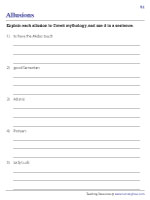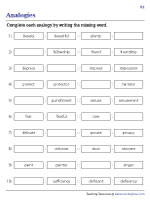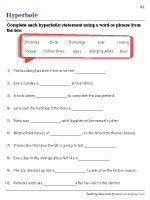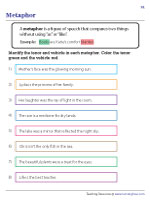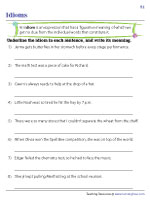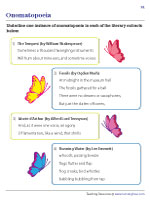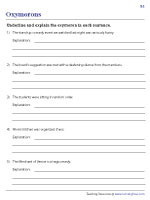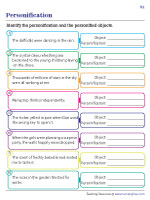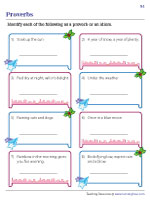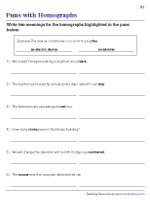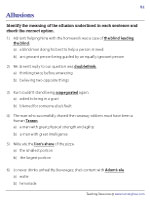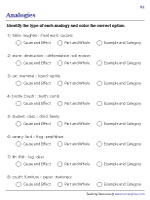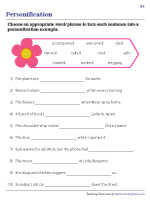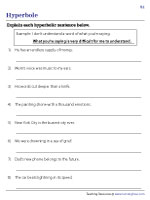7th Grade Figurative Language Worksheets
Get back into the swing of things with our free, printable 7th grade figurative language worksheets and boast a crackerjack knowledge of figures of speech such as idioms, analogies, allusions, and hyperbole, allowing your writing to shine at its most effective and most persuasive.
Select Grade 7 ELA Worksheets by Topic
Explore Seventh Grade Figurative Language Worksheets
Explaining Mythological Allusions and Using them in Sentences
Lend your writing a Hellenistic flair by first explaining, and then framing a sentence centered around each allusion rooted firmly in the vast and magical expanse of Greek mythology.

Completing Analogies by Writing the Missing Words
Before you start figuring the missing words to complete the analogies in our 7th grade figurative language worksheets, think about the relationship that governs each analogy.

Completing Hyperbole Using Words Given
Every example in our pdf grade 7 figurative language worksheets on using words in the box to complete a set of hyperbolic sentences, lets some ordinary idea come across as extraordinary.

Identifying the Tenor and Vehicle in a Metaphor
While it's good to grab these metaphors to add texture and beauty to your description, you must recognize the part of the metaphor that is being compared along with the part that's being compared to.

Identifying Idioms and Writing Their Meanings
Boost your conversational English skills with the idioms in this exercise on underlining idioms and writing their meanings from our pdf 7th grade figurative language worksheets.

Identifying Onomatopoeia in Literary Texts
There is not one but several sound words used in each literary extract here; children must underline one onomatopoeic word in each extract.

Identifying and Explaining Oxymorons
While underlining and writing the meaning of oxymorons is the task prescribed, kids must also be encouraged to use oxymorons as a vehicle for conveying larger meanings or emotions.

Identifying Personification and Objects Personified
Kick your knowledge of personification up a gear by reading each sentence and writing the personification and the object being personified in it.

Understanding the Difference between Proverbs and Idioms
Before you identify each example as an idiom or proverb, remember an idiom is a phrase with a non-literal meaning, while a proverb is a sentence that gives a piece of advice.

Every pun here abounds in humor, so the child will laugh their heart out as they zero in on the highlighted homograph and write two meanings for it.

Understanding Meanings of Allusions
An allusion is highlighted in each sentence; task kids with choosing the option that encapsulates the allusion's meaning in our printable figurative language worksheets for grade 7.

Identifying Types of Analogies
Read each analogy, use your analytical skills, and determine if it is a cause-and-effect, part-and-whole, or example-and-category analogy.

Changing Sentences into Personification Using Given Words
Kids will be on a hot streak, picking words from the word box to transform each sentence into an example of personification in our pdf grade 7 figurative language worksheets.

Each proverb is followed by three options, one of which summarizes the meaning or context of use of the proverb. Check the correct answer.

Enjoy a bit of hyperbolic fun by writing the meanings of several examples of hyperbole in everyday English in these printable figurative language worksheets for 7th grade.


 Interactive Worksheets
Interactive Worksheets Worksheets by Grade
Worksheets by Grade Grammar
Grammar Vocabulary
Vocabulary Figurative Language
Figurative Language Phonics
Phonics Reading Comprehension
Reading Comprehension Reading and Writing
Reading and Writing
